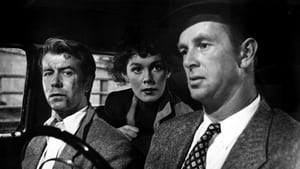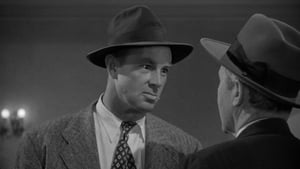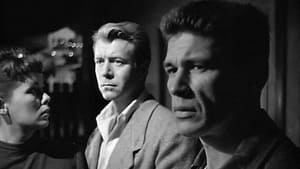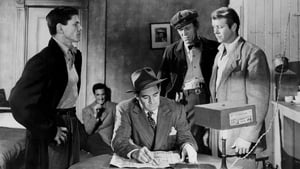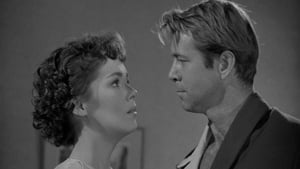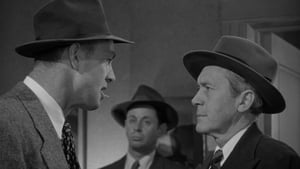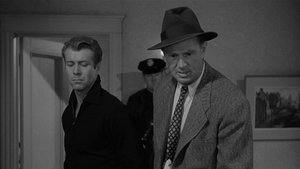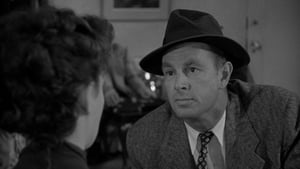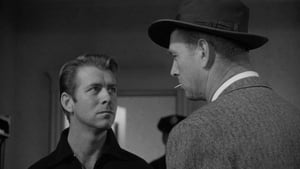Contact: [email protected]
Video Sources 0 Views

Synopsis
[ez-toc]




Introduction
In the mesmerizing intersection of cinematic history and modern technology, “Crime Wave Colorized 1953” emerges as a radiant testament to the enduring charm of old films. This timeless classic, now revitalized in color, marries the gritty allure of film noir with a visual palette that breathes new life into its narrative. In this exploration of colorized movies, we delve into the significance of revitalizing old films and the timeless appeal of the film noir genre through the lens of “Crime Wave Colorized 1953.”
Read Media File Transfer Agreement: Terms and Conditions
Read FAQ
The Making of Crime Wave Colorized 1953
“Crime Wave Colorized 1953,” directed by Andre de Toth and shot by cinematographer Bert Glennon, is a masterpiece that encapsulates the essence of film noir. The film stars Sterling Hayden as Detective Barrett and Phyllis Kirk, whose performances elevate the narrative’s shadowy complexities.
De Toth, with a keen eye for noir aesthetics, carefully crafted a tale of crime, suspense, and moral ambiguity. Glennon’s cinematography becomes a silent storyteller, capturing the interplay of light and shadow that defines the genre. Sterling Hayden’s portrayal of Detective Barrett, a character teetering on the edge of justice and darkness, and Phyllis Kirk’s enigmatic presence add depth to the film’s exploration of the human psyche.
Exploring the Setting and Visual Style
Los Angeles, with its smoky alleyways and dimly lit streets, plays a crucial role in setting the stage for “Crime Wave Colorized 1953.” Beyond being a mere backdrop, the city becomes a character, influencing the characters’ choices and moral dilemmas. Drawing inspiration from ’50s television series aesthetics, the film immerses viewers in a world that feels both nostalgic and ageless.
Adding to the atmospheric tone is Jay Novello’s character, who contributes to the overall mood and tension of the narrative. The film seamlessly weaves these elements together, creating an immersive experience that transcends time and space.
The Significance of Colorization in Crime Wave 1953
In a bold departure from the original black-and-white format, “Crime Wave Colorized 1953” embraces the colorization process. This decision, far from a casual one, aims to enhance the viewer’s emotional engagement with the story. The impact of colorization is palpable, breathing new life into the film and providing a fresh perspective on its thematic intricacies.
The colorization process involves digitally adding color to each frame of the film, revitalizing its visual appeal. While purists may debate the merits of altering the original aesthetic, the decision to colorize “Crime Wave 1953” brings forth a renewed vibrancy that captivates modern audiences.
Reception, Influence, and Legacy
Upon its original release, “Crime Wave Colorized 1953” garnered critical acclaim for its gripping narrative and stellar performances. Sterling Hayden’s portrayal of Detective Barrett and Phyllis Kirk’s enigmatic character left an indelible mark on crime thrillers of the era. Gene Nelson, who plays a pivotal role in the film, adds his signature touch to the ensemble, solidifying the movie’s influence on subsequent crime films.
As we compare “Crime Wave Colorized 1953” to other Gene Nelson movies, the unique flavor it brings to the crime genre becomes evident. The film’s legacy endures, with its impact resonating through the decades, shaping the trajectory of noir storytelling on the silver screen.
Where to Watch Crime Wave Colorized 1953
For those eager to embark on this noir journey, “Crime Wave Colorized 1953” awaits on popular streaming platforms. Whether it’s Apple TV, Amazon Prime Video, or Vudu, these platforms offer an accessible gateway to the captivating world of Detective Barrett and the mysteries that unfold in vivid hues. Explore featured reviews and ratings to gauge the anticipation surrounding this cinematic gem.
The Debate Over Colorizing Old Films
The contentious practice of colorizing old movies ignites a passionate debate among cinephiles. While some argue that colorization breathes new life into classics, others staunchly champion the preservation of the original black-and-white aesthetic. “Crime Wave Colorized 1953” finds itself at the epicenter of this discourse, prompting questions about artistic intent, cinematic evolution, and the delicate balance between nostalgia and innovation.
The controversy surrounding colorized movies raises broader questions about the preservation of cinematic heritage. As technology advances, should filmmakers embrace new possibilities, or does the integrity of the original vision take precedence? The debate remains a fascinating exploration of the evolving nature of cinema and the delicate dance between tradition and progress.
Embracing the Timelessness of Film Noir
At the heart of “Crime Wave Colorized 1953” is Detective Lieutenant Sims, a character who transcends the boundaries of time. Sims embodies the timeless allure of the film noir archetype, navigating the murky waters of morality and justice. As we traverse the shadowy alleys with Sims, we are reminded of the enduring magic that defines the noir genre.
The film becomes a testament to the timeless quality of storytelling, where the exploration of human flaws and moral ambiguity resonates across generations. Detective Sims, with his trench coat and fedora, becomes an emblematic figure, representing the perpetual fascination audiences have with the enigmatic and complex characters that populate the world of film noir.
Conclusion
In the enchanting marriage of color and noir aesthetics, “Crime Wave Colorized 1953” invites audiences to rediscover the magic of old films. As we navigate the ongoing debate over colorization in cinema, this classic serves as a beacon, urging viewers to witness its stunning transformation. Step into the world of Detective Barrett and the enigmatic characters of “Crime Wave Colorized 1953,” and let the vivid hues of nostalgia captivate your cinematic senses.
In a world where old movies find new life, this noir masterpiece stands as a testament to the enduring allure of the silver screen. As we encourage readers to experience the mesmerizing fusion of classic storytelling and modern technology, “Crime Wave Colorized 1953” emerges not just as a movie but as a cinematic journey that transcends time, inviting audiences to revel in the timelessness of film noir.
